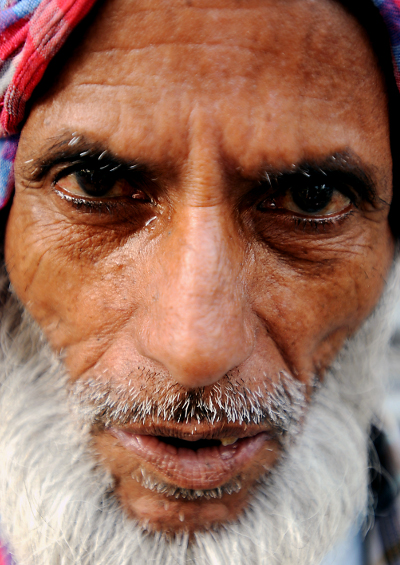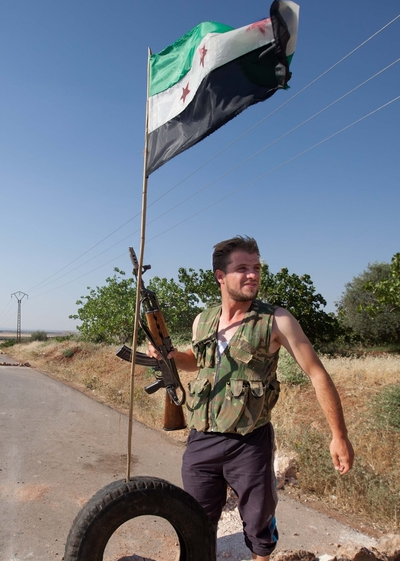Labor in India: A Rickshaw Driver’s Story
Mohammed the rickshaw driver shows a slice of street life in India.
October 5, 2014

A German citizen based in Singapore, Olaf Schuelke is an independent photographer and writer. His photographs have appeared in a number of international newspapers as well as on CNN and Discovery Channel Magazine.
Mohammed Komrulhoda, 57, works as a rickshaw puller in the streets around Kolkata’s New Market area, starting before dawn and usually carrying on until nine o’clock at night.
From Purvi Champaran, a small village in northern India’s Bihar state, he averages around six or seven customers a day. Each of them pays between 10 rupees and 30 rupees for a journey – the equivalent of 10 to 50 cents in U.S. currency.
His total daily earnings range between 50 rupees and 100 rupees, from which he has to pay 30 rupees for the rental of his rickshaw. At night he sleeps in a room shared with a dozen or so other men, paying 90 rupees a month for his bed.
Two or three times a year, he travels by train to visit his family in Bihar, journeys which each cost him around 5,000 rupees. Any money he has left after paying for food and his other living costs he sends to relatives in Bihar.
He has five children, two of whom – his youngest daughters – remain unmarried because he cannot save enough money to give them dowries big enough to attract suitable husbands.
Text and photographs by Olaf Schuelke
 Enlarge On the streets for around 15 hours a day, most of Mohammed’s time is spent waiting for his next customer.
Enlarge On the streets for around 15 hours a day, most of Mohammed’s time is spent waiting for his next customer. Enlarge Mohammed takes an afternoon break with a cup of tea.
Enlarge Mohammed takes an afternoon break with a cup of tea. Enlarge Eating lunch at a street-side restaurant. Most days, Mohammed can only afford a few chapati (Unleavened flat bread), some dhal (lentils) and a bowl or two of rice. Occasionally he treats himself to a little chicken or mutton.
Enlarge Eating lunch at a street-side restaurant. Most days, Mohammed can only afford a few chapati (Unleavened flat bread), some dhal (lentils) and a bowl or two of rice. Occasionally he treats himself to a little chicken or mutton. Olaf Schuelke’s photographs have appeared in a number of international newspapers as well as on CNN and Discovery Channel Magazine. With photography Olaf is “searching for the beauty and purity inside all the hardship and poverty.”
Olaf Schuelke’s photographs have appeared in a number of international newspapers as well as on CNN and Discovery Channel Magazine. With photography Olaf is “searching for the beauty and purity inside all the hardship and poverty.”The Other Hundred is a unique photo-book project (order here) aimed as a counterpoint to the Forbes 100 and other media rich lists by telling the stories of people around the world who are not rich but who deserve to be celebrated.
Its 100 photo-stories move beyond the stereotypes and cliches that fill so much of the world’s media to explore the lives of people whose aspirations and achievements are at least as noteworthy as any member of the world’s richest 1,000.
 Selected from 11,000 images shot in 158 countries and submitted by nearly 1,500 photographers, The Other Hundred celebrates those who will never find themselves on the world’s rich lists or celebrity websites.
Selected from 11,000 images shot in 158 countries and submitted by nearly 1,500 photographers, The Other Hundred celebrates those who will never find themselves on the world’s rich lists or celebrity websites.

